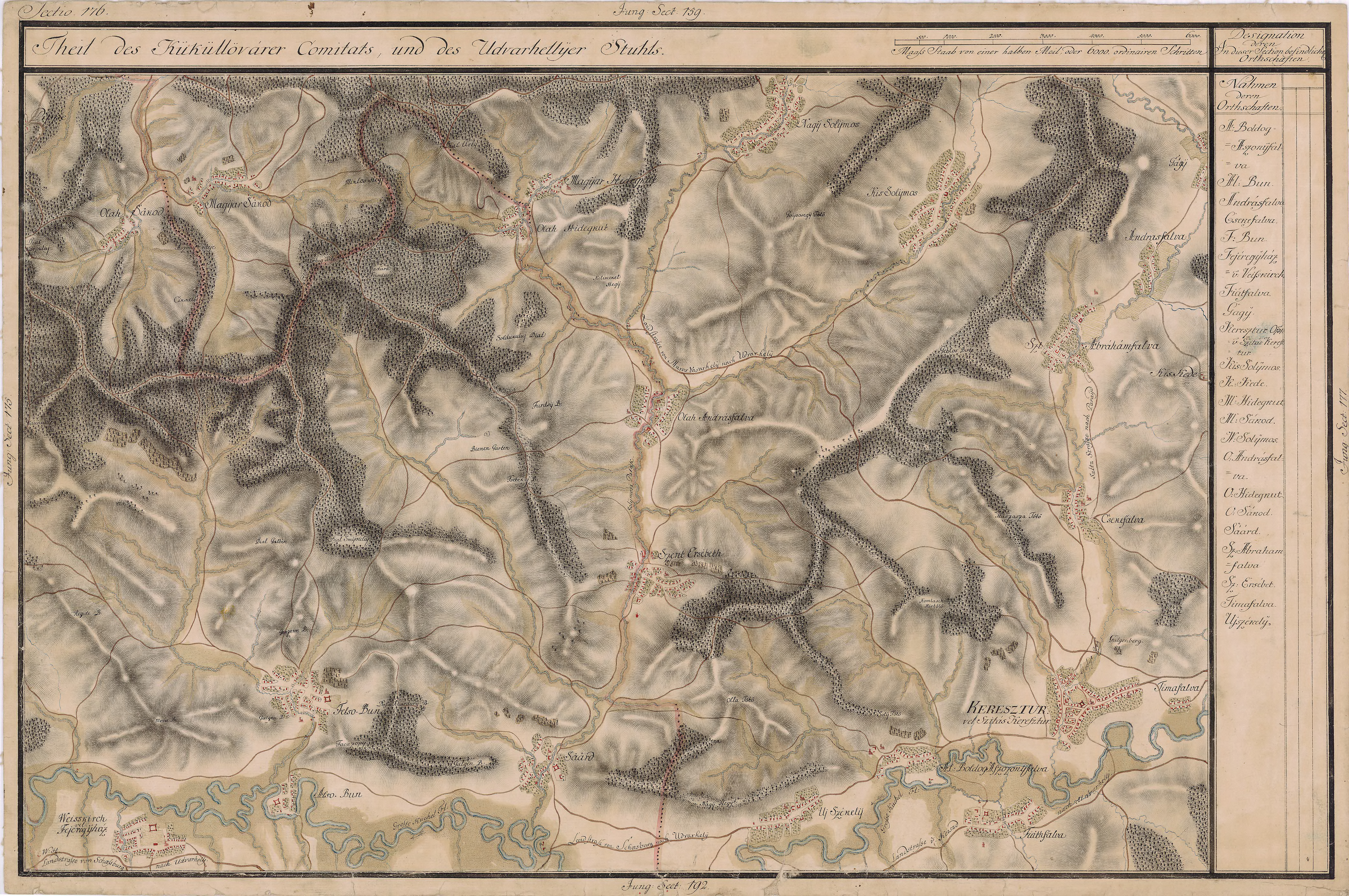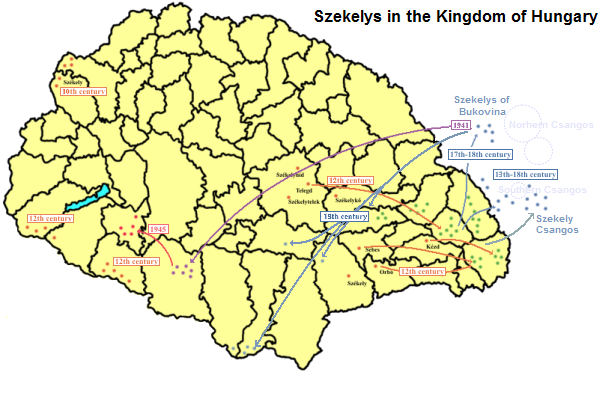|
András Eőssi
András Eőssi (died ca. 1598-1602) of Szenterzsébet (Romanian Secuieni, Harghita, Eliseni), in Harghita, was a Székelys, Székely nobleman in Transylvania who founded the Szekler Sabbatarians sect. Eőssi came into contact with Matthias Vehe and, after the death of Ferenc Dávid in 1579, set up the Sabbatarian branch of the Transylvanian Unitarians. He was an autodidact, with followers including Simon Péchi and the Unitarian Miklós Bogáthi Fazekas. The first major study on this group was published in Hungarian in 1899 by Samuel Kohn.Heinrich Graetz, Miksa Szabolesi, Samuel Kohn '' A zsidók egyetemes története'' - 1908 "A község földesura, Eőssi András meghivta gyermekei mellé nevelőül. Az özvegységre jutott beteg ember rábizta nemcsak gyermekeit, hanem egész jószágát. Közben Eőssi gyermekei sorra elhaltak és ekkor a nagytehetségü, kellemes külsejü és ..." References {{DEFAULTSORT:Eossi, Andras Szekler Sabbatarians Year of death uncertain 16th-cen ... [...More Info...] [...Related Items...] OR: [Wikipedia] [Google] [Baidu] |
Secuieni, Harghita
Secuieni (, ) is a commune in Harghita County, Romania. It lies in the Székely Land, an ethno-cultural region in eastern Transylvania. Component villages The commune is composed of three villages: History The villages were part of the Székely Land region of the historical Transylvania province. They belonged to Udvarhelyszék district until the administrative reform of Transylvania in 1876, when they fell within the Udvarhely County in the Kingdom of Hungary. After the Treaty of Trianon of 1920, they became part of Romania and fell within Odorhei County during the interwar period. In 1940, the second Vienna Award granted the Northern Transylvania to Hungary and the villages were held by Hungary until 1944. After Soviet occupation, the Romanian administration returned and the commune became officially part of Romania in 1947. Between 1952 and 1960, the commune fell within the Magyar Autonomous Region, between 1960 and 1968 the Mureș-Magyar Autonomous Region. In 1968, th ... [...More Info...] [...Related Items...] OR: [Wikipedia] [Google] [Baidu] |
Harghita
Harghita County (, and , ) is a county () in the center of Romania, in eastern Transylvania, with the county seat at Miercurea Ciuc. Demographics 2002 census In 2002, Harghita County had a population of 326,222 and a population density of 52/km2. * Hungarians – 84.62% (or 276,038) * Romanians – 14.06% (or 45,870) * Romani – 1.18% (or 3,835) * Others – 0.14% 2011 census In 2011, it had a population of 302,432 and a population density of 46/km2. * Hungarians – 85.21% (or 257,707) * Romanians – 12.96% (or 39,196) * Romani * Others – 1.76% (or 5,326). 2021 census In 2021, it had a population of 291,950, and a population density of 43/km2. * Hungarians – 85.67% (or 232,157) * Romanians – 12.41% (or 33,634) * Romani - 1.82% (or 4,928) * Others – 0.1% (or 282). Harghita county has the highest percentage of Hungarians in Romania, just ahead of Covasna county. The Hungarians form the majority of the population in most of the county's municipal ... [...More Info...] [...Related Items...] OR: [Wikipedia] [Google] [Baidu] |
Székelys
The Székelys (, Old Hungarian script, Székely runes: ), also referred to as Szeklers, are a Hungarians, Hungarian subgroup living mostly in the Székely Land in Romania. In addition to their native villages in Suceava County in Bukovina, a significant population descending from the Székelys of Bukovina currently lives in Tolna County, Tolna and Baranya County, Baranya counties in Hungary and certain districts of Vojvodina, Serbia. In the Middle Ages, the Székelys played a role in the defense of the Kingdom of Hungary#Middle Ages, Kingdom of Hungary against the Ottoman Empire, Ottomans in their posture as guards of the eastern border. With the Treaty of Trianon of 1920, Transylvania (including the Székely Land) became part of Romania, and the Székely population was a target of Romanianization efforts. In 1952, during the Socialist Republic of Romania, communist rule of Romania, the former counties with the highest concentration of Székely population – Mureș County#His ... [...More Info...] [...Related Items...] OR: [Wikipedia] [Google] [Baidu] |
Szekler Sabbatarians
The Szekler Sabbatarians (in Transylvanian Saxon: (Siebenbürgen) Sambatianer; in German: Siebenbürgische Sabbatianer; in Hungarian: Szombatosok, zombatosok, sabbatariusok, zsidózók, Şomrei Sabat) were a religious group in Transylvania and Hungary between the sixteenth and nineteenth centuries who held Unitarian and Judaizing beliefs, including the affirmation of Seventh-day Sabbatarianism. History The Magyar Sabbatarians arose among Transylvanian Unitarians, led by Matthias Vehe's followers András Eőssi and Simon Péchi who founded the Sabbatarians in 1588, after Ferenc Dávid died in prison and the Unitarian church formalised on a non-Sabbatarian line. Initially they believed Jesus to be the messiah, but a human rather than divine messiah. Gradually they passed to read only the Old Testament and to celebrate Torah's feasts, follow dietary laws, and a strict observance of seventh-day Sabbath, but not circumcision. Most of their followers were of Székely ethnicity a ... [...More Info...] [...Related Items...] OR: [Wikipedia] [Google] [Baidu] |
Simon Péchi
Chancellor Simon Péchi (c. 1570/1575–1642) was a Hungarian Székely official, and wealthy supporter of Matthias Vehe and nobleman András Eőssi's Szekler Sabbatarians movement in Transylvania Transylvania ( or ; ; or ; Transylvanian Saxon dialect, Transylvanian Saxon: ''Siweberjen'') is a List of historical regions of Central Europe, historical and cultural region in Central Europe, encompassing central Romania. To the east and .... The influence of Péchi's Sabbatarian prayer book contributed to the conversion of around twenty thousand Székelys to Sabbatarianism in the late sixteenth century. Samuel Kohn, Chief Rabbi of Budapest, and the first scholar to take an interest in the Sabbatarians among the Transylvanian unitarians, published a biography of Péchi as part of his studies in 1899. Works * Atyák mondásai — Pirqé ávotLouise Olga Vasvári, Steven Tötösy de Zepetnek ''Imre Kertész and Holocaust literature'' 2005 Page 331 "Her translations from the ... [...More Info...] [...Related Items...] OR: [Wikipedia] [Google] [Baidu] |
Matthias Vehe
Matthias Vehe known as Glirius (c.1545-1590) was a German Protestant religious radical, who converted to a form of Judaism and anti-trinitarianism, rejecting the ''New Testament'' as revelation. The identity of Vehe and the writer Glirius, who published ''Mattanjah'' (Knowledge of God, 1578) in Cologne, was established by G. E. Lessing. The history of the group including Vehe has been reconsidered by recent scholarship. Life He was born in Ballenberg, and brought up in Königshofen. He studied at the University of Heidelberg, and at the University of Rostock under David Chytræus. He was arrested by the local Church Council with others in 1570, as a dissenter from the Calvinism being introduced by the Elector Palatine. He was at that time deacon at Kaiserslautern. Adam Neuser, later a convert to Islam, eventually escaped with help from Simon Grynaeus. Johannes Sylvan was executed, in 1572. Two others involved were Jacob Suter and Johann Hasler. He took refuge in Transylv ... [...More Info...] [...Related Items...] OR: [Wikipedia] [Google] [Baidu] |
Ferenc Dávid
Ferenc Dávid (also rendered as ''Francis David'' or ''Francis Davidis''; born as Franz David Hertel, – 15 November 1579) was a preacher and theologian from Transylvania, the founder of the Unitarian Church of Transylvania, and the leading figure of the Nontrinitarian Christian movements during the Protestant Reformation. He disputed the mainstream Christian doctrine of the Trinity, believing God to be one and indivisible. Studying Catholic theology in Wittenberg and in Frankfurt an der Oder, he was first ordained as a Roman Catholic priest, later he became a Lutheran minister and then a Calvinist bishop in the Principality of Transylvania. Throughout his career as a Christian theologian and professor, Dávid learnt the teachings and practices of the Roman Catholic and Magisterial Protestant churches, but later rejected several of them and came to embrace Unitarianism. Life Early life Ferenc Dávid was born in Kolozsvár, Hungary (present-day Cluj-Napoca, Romania), t ... [...More Info...] [...Related Items...] OR: [Wikipedia] [Google] [Baidu] |
Miklós Bogáthi Fazekas
Miklós Bogáthi Fazekas (; 4 December 1548, in Torda – 1592 in Kolozsvár) was a Transylvanian Unitarian and Sabbatarian. He had been a teacher in Torda before the 1579 death of Ferenc Dávid. After he associated with the Szekler Sabbatarians who were later persecuted by the Calvinist bishop István Geleji Katona. John Nevins Andrews (Seventh-day Adventist The Seventh-day Adventist Church (SDA) is an Adventist Protestant Christian denomination which is distinguished by its observance of Saturday, the seventh day of the week in the Christian (Gregorian) and the Hebrew calendar, as the Sabbat ...) ''History of the Sabbath and the first day of the week'' 1912 "Among quite a number of prominent men, Bogathi Fazakas Miklos, and Simon Pechi, the scholar and statesman, deserve special mention. After the death of his. sons, Andras Eossi adopted Pechi, but immediately sent him on an extended tour, ..." References Szekler Sabbatarians 1548 births 1592 deaths Hungaria ... [...More Info...] [...Related Items...] OR: [Wikipedia] [Google] [Baidu] |
Samuel Kohn
Samuel Kohn (1841–1920) was a Hungarian rabbi in Budapest from 1866 to 1905, time he was the Chief Rabbi of Budapest. He is remembered today as the author of ''A szombatosok, történetök, dogmatikájok és irodalmok'' ("The Sabbatarians: a complete history and dogmatic literature", Budapest 1889, German translation ''Die Sabbatarier in Siebenbürgen'' Leipzig 1894) concerning András Eőssi and other 16th Century Transylvanian Szekler Sabbatarians. Kohn's study coincided with Jewish interest in the sect, and in the following years most were absorbed into Judaism. Kohn was a prominent champion of the pro-Magyarization program of Neolog Judaism and in order to bolster this program he argued for the mixed Khazar and Magyar ancestry of Hungarian Jews The history of the Jews in Hungary dates back to at least the Kingdom of Hungary, with some records even predating the Hungarian conquest of the Carpathian Basin in 895 CE by over 600 years. Written sources prove that Jewish co ... [...More Info...] [...Related Items...] OR: [Wikipedia] [Google] [Baidu] |
Year Of Death Uncertain
A year is a unit of time based on how long it takes the Earth to orbit the Sun. In scientific use, the tropical year (approximately 365 solar days, 5 hours, 48 minutes, 45 seconds) and the sidereal year (about 20 minutes longer) are more exact. The modern calendar year, as reckoned according to the Gregorian calendar, approximates the tropical year by using a system of leap years. The term 'year' is also used to indicate other periods of roughly similar duration, such as the lunar year (a roughly 354-day cycle of twelve of the Moon's phasessee lunar calendar), as well as periods loosely associated with the calendar or astronomical year, such as the seasonal year, the fiscal year, the academic year, etc. Due to the Earth's axial tilt, the course of a year sees the passing of the seasons, marked by changes in weather, the hours of daylight, and, consequently, vegetation and soil fertility. In temperate and subpolar regions around the planet, four seasons are gen ... [...More Info...] [...Related Items...] OR: [Wikipedia] [Google] [Baidu] |



